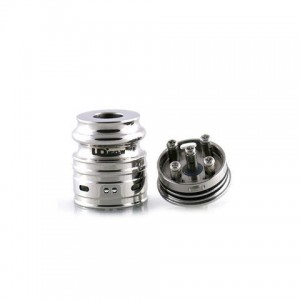The functions of rebuildable atomizers

Basically, an RBA is a device with industry standard threading — usually 510 — at the bottom and two posts at the top. In order to rebuild it, you take some kanthal wire, wrap it several times around a silica or cotton wick and connect the wire to both posts.
After touching both tips of a resistance meter to the RBA threading to make sure that you’ve met the necessary resistance and that there isn’t a short, the RBA is ready to use. Just like with a standard atomizer, the wick becomes saturated when you drip e-liquid into an RBA, holding it in close contact with the coil.
The resistance of the coil is specified by the thickness of the wire, the number of times it is wrapped around the wick and the diameter of each wrap.
Suppose your RBA has two positive posts and two negative posts — this means you’ve got a dual-coil RBA. Running two coils from the same power source indicates that the total resistance will be half that of a single coil. Just because of the variance inherent in wrapping an RBA coil by hand, checking its resistance is really an essential step; the aim is to check its safety before connecting it to a high-output battery.
As with a standard atomizer, you’ll finally start to see decreased vapor generation as the wire begins to wear out. At this point, you’ll simply remove it, take a new length of silica wick and wrap another coil. Because creating a new coil costs just almost nothing every time, your RBA will be worth paying for itself after a dozen coils or so.